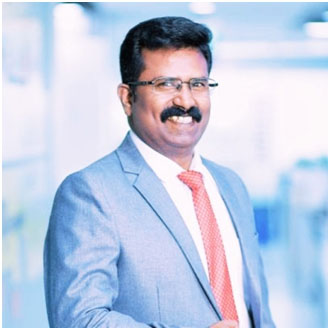There should be a transparent and efficient communication system in place to address any safety concerns that may arise?
Shuvendu Rout, HSE director and HSSE Head, Colliers talks about his organisation and its focus areas in HSE, key challenges faced as an HSE professional, strategies they deploy to alleviate those challenges, his views on current HSE scenario in Indian industries and what more needs to be done to change it and new HSE initiatives they are planning to implement within their organization in the near future.

Interviewed by Adeesh Sharma & Nisha Biradar
Please tell us about your organization and its focus areas in HSE ?
I am a former HSE director at JLL and currently HSSE Head at Colliers.
What challenges do you face as a key HSE professional ?
Safety professionals are crucial in safeguarding the welfare of individuals across different sectors. They are tasked with recognizing potential safety risks, adhering to industry regulations, and efficiently handling emergencies. Despite their essential role, safety professionals encounter various obstacles in fulfilling their duties. These obstacles encompass issues such as - safety awareness, - regulatory compliance, - limited resources, and - ineffective communication - ownership & accountability Moreover, a prevalent challenge faced by many safety professionals today is the lack of backing from senior management and reluctance towards implementing changes.
What strategies/solutions you deploy to alleviate those challenges ?
In order to tackle these obstacles, it is crucial to provide training, guidance, and awareness to both employers and employees regarding the significance of safety. It is essential to raise awareness about the necessity of adhering to HSE rules, and regulations and encourage them to implement safety protocols and comply with safety standards. Additionally, there should be a transparent and efficient communication system in place to address any safety concerns that may arise. Furthermore, it is important to involve employees in more frequent training sessions, including behaviour-based safety programs, and maintain regular communication to identify potential risks and ensure the adoption of safety measures during work execution. Lastly, the commitment and ownership of leaders in safety initiatives play a vital role in overcoming safety challenges within the organization.
What are your views on current HSE scenario in Indian industries and what more needs to be done to change it?
The implementation of acts, rules, and regulations in the construction sector of India needs to be more stringent in order to ensure compliance. It is crucial for government enforcement agencies to strictly enforce the rules in order to enhance the current health, safety, and environmental (HSE) scenario in India.
Furthermore, it is crucial for each person within a company to take responsibility and be answerable for guaranteeing adherence to the standard safety management protocols in order to facilitate significantchange.
What new HSE initiatives are you planning to implement within your organization in the near future ?
The HSE initiatives are developed and executed based on the level of risk associated with the job. As per example, in the construction industry, working at heights and working with electricity are always considered high-risk activities. However, these risks can be effectively managed by thoroughly planning the work methods during the initial stages. One way to address the risk of working at heights is by implementing engineering controls such as using boom lifts, cherry pickers, and man and material hoists. These measures ensure the safety of workers who need to work at elevated positions. Similarly, to minimize the risk of electrical shock, it is crucial to replace traditional electrical power tools with battery-operated tools. This simple change can significantly reduce the likelihood of incidents occurring. It is important to note that there are numerous other initiatives that can be adopted to enhance safety. However, all these factors require careful consideration and brainstorming during the planning and design stages. This includes analysing risks not only during the construction period but also considering the safety of end users. Again, it is crucial to emphasize that the achievement of these initiatives heavily relies on the optimistic attitude of the individuals within the company..



